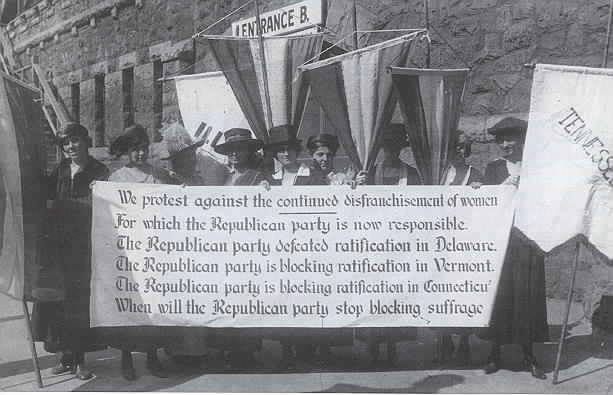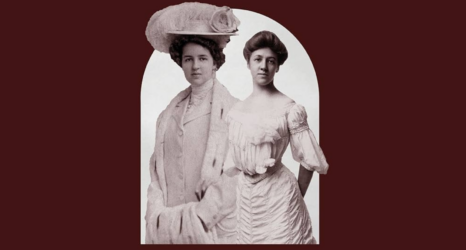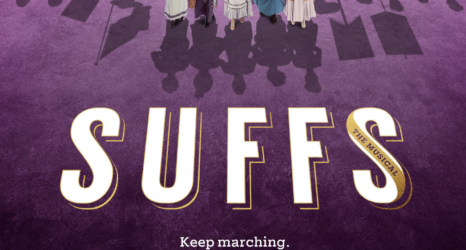
Today in Feminist History is our daily recap of the major milestones and minor advancements that shaped women’s history in the U.S.—from suffrage to Shirley Chisholm and beyond. These posts were written by, and are presented in homage to, our late staff historian and archivist, David Dismore.
June 8, 1920: One hundred and twenty-five National Woman’s Party members are surrounding the Chicago Coliseum on this first day of picketing, holding up large and colorful banners demanding that the Republican Party do more than just pass a pro-suffrage resolution at its national convention this week.

Instead of just putting mere words in a party plank, or giving speeches patting themselves on the back for having done far more than Democrats for the cause of equal suffrage, Republicans must do something truly meaningful. Now that the Susan B. Anthony Amendment, which bans sex discrimination in regard to voting rights, has been passed by Congress and won 35 of the 36 State ratifications it needs to become part of the U.S. Constitution, Republicans must provide that 36th State.
Mabel Vernon led 124 other members of the N.W.P. to the gates of the Coliseum, where most pickets are carrying the group’s purple, white and gold standards, or banners denoting their home State, while the rest are holding up huge banners explaining to Republican Convention delegates—and the press—why it’s now Republicans, not Democrats, who are preventing the Anthony Amendment from becoming the Nineteenth Amendment:
“We protest against the continued disenfranchisement of women for which the Republican Party is now responsible. The Republican Party defeated ratification in Delaware. The Republican Party is blocking ratification in Vermont. The Republican Party is blocking ratification in Connecticut. When will the Republican Party stop blocking suffrage ?”
The banner refers to the fact that the Republican-controlled Delaware Assembly recently declined to even take a vote on ratification of the Anthony Amendment, and then adjourned until next year. A majority of State legislators in Vermont and Connecticut are believed to be in favor of suffrage, but their legislatures are not in session, and cannot meet until their next regular session in 1921 unless called into special session by their Republican governors. Both have refused to issue the call. Another banner echoed the same theme:
“The Republican Party has the power to enfranchise women. When will it do so ?”
Like the N.W.P.’s “Silent Sentinels” who picketed the White House from 1917 to 1919 to pressure Democratic President Woodrow Wilson into first endorsing, then actively working for the Anthony Amendment, today’s protesters are deliberate and dignified. There is no heckling or harassment of delegates as they arrive or leave. No speeches are being made. There is simply a long and impressive line of women carrying powerful messages on banners.
Protesters such as Betty Gram, who came here from Portland, Oregon, and Doris Stevens of New York prove that this is a nationwide effort. It is multi-generational as well. The pickets range in age from very young women to the venerable Reverend Olympia Brown, age 85, holding a banner in the hot sun that quotes the last public words of the late Inez Milholland Boissevain, who gave her life for the cause in 1916, and asks:
“How long must women wait for liberty ?”
Though there is no time limit on ratifying the Anthony Amendment, the Presidential election is just five months away. With voter registration deadlines having already passed in Georgia and Mississippi, and approaching in other States where women cannot presently vote, the answer to the question on Reverend Brown’s banner should be “No longer.”





